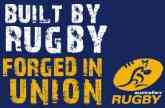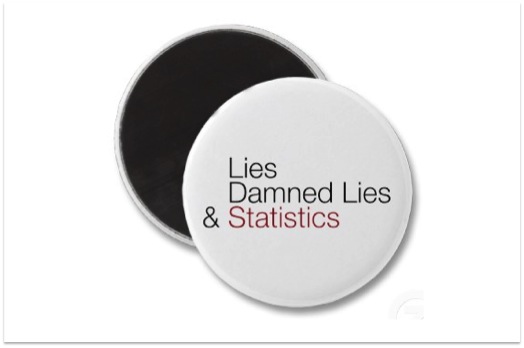Earlier this week the ARU’s 2012 Annual Report report was released, in which it’s claimed that Australian rugby participation numbers are at an all-time high. The report claims that with a total of 323,115 players (representing a 24% growth on 2012) “Australian Rugby has enjoyed another record breaking year of participation”.

However, when you strip back the double (and possibly triple) counting and take into account the overall growth of the population, you see a very different picture. One that most Aussie rugby lovers fear is closer to the truth.
The total figure is also only a comparison of 15s playing numbers. The Sevens figures were not included in the 2006 report, so including them in the 2012 report would horribly inflate these figures. This statistical inflation is something I will touch on later. I also removed the “Golden Oldies” figures from my 2012 totals. No offence intended to our Women’s Rugby players, but I also omitted the participation figure for women as the focus of this piece is the implications of the 2012 ARU report for the Wallabies.
This first chart is a comparison of the ARU-reported statistics from 2006 and 2012, with the aforementioned adjustments made.
From this chart it would appear that rugby is in a very good place in Australia right now. More young men and boys are out there getting their hands on a rugby ball and their feet on the pitch. But “appear” is the operative word here.
The “Schools (2)” Rort
Quite a large portion of these playing figures is contributed by a demographic that the ARU has labeled as “Schools (2)”. So what exactly is “Schools (2)”? Well, this group consists of what the ARU calls “Irregular Schools”. These are schools that have participated in any form of Rugby Union over the past year. For example, if a school entered a team into only a single match at a single one-day carnival, it would be registered and counted as an “Irregular School”.
When you consider that many of these kids are unlikely to ever play rugby again and that their numbers are weighted exactly the same as those of players registered with the ARU, who are playing on regular schedules in an organised league, the reality of things begins to emerge. Here’s what happens when you remove the “Schools(2)” figure from the playing numbers:
This liberal use of the “Schools(2)” figure is just one issue that I have with this ARU report.
Triple Counting
First, the addition of the Sevens category inflates the playing figures in the 2012 report. Just because the ARU wasn”t keeping tabs or figures on the Sevens game doesn’t mean it didn’t exist beforehand. Does anyone really believe that over 5,000 kids around Canberra picked up a ball and played Sevens for the first time in 2011? Let’s be real for a second here: 2012 is just the second year the ARU is recording Sevens figures at the sub-professional level. So this “explosive growth” could be a result of getting their act together and properly sourcing playing figures, rather than a reflection of growth in the player pool.
I”ve already expressed my issue with the inclusion of the “Schools(2)” figure in this report but without it I would have never discovered some of the other glaring flaws. After removing the Women’s, Golden Oldies, Sevens and “Schools(2)” numbers from the South Australian Rugby Union’s figures I ended up with less than minus-1000 players. Obviously it isn’t possible for there to be even minus-1 rugby player, even in southern-central Australia.
So what is the significance of this? Well, it means that beyond any shadow of a doubt the ARU is double and even triple counting some of these players. For example, if a player turned out for his suburban club, participated in a local Sevens tournament and also had his school participate in any form of Rugby Union, he would be counted three times. This is either incredibly poor data collection by the ARU or a deliberate attempt to inflate the playing numbers. Either way, this brings the viability of the entire data set into question.
Beyond this, it is a shame that the “Schools(2)” figure was not taken and observed within its own context and analysed to a greater degree. While “Schools(2)” is in no way an accurate indicator of the health of rugby in Australia it could be a great way to track the ARU’s return on investment in the game – for example, if the ARU could find a way to do a follow-up with these irregular schools/players and tried to figure out what the rates are for conversion to regular competition-based rugby. But trying to track the impact of the cash you are throwing at the game would be silly though, right?
Factoring in Population Growth
These figures are even more damning for the ARU when viewed in the context of total population growth in Australia in the same time period.
In 2006 the total population of Australia was 20,848,760. Adjusting for the “Other Territories” figure (we can’t use them when comparing unions) and after omitting women (sorry again, ladies!) we get a total male population of 10,282,433. By territory, the male population growth from 2006 to 2012 was:
In 2012 the total male population of Australia was 11,161,967 (+8.55% growth rate or +1.425% annual growth rate ). By territory:
When we put the ARU’s numbers against these figures what do we get? With the Sevens and “School(2)” figures removed, a starkly different picture emerges. Reliability of the ARU data set aside, the participation of male athletes between the Youth and Senior Club levels has declined by over 5.5% annually between 2006 and 2012 for a total decline of just under 33.33%.
Even in the areas of highest population growth (Queensland and Western Australia) we see growth rates of -6.51% and -5.50% respectively for male participation in rugby.
The only conclusion that can be drawn from this is that the ARU has failed spectacularly at increasing the number of male participants at all amateur levels of 15s rugby in Australia.
It is only a matter of time until the impact of this is being felt at the Super Rugby and Wallabies level. I fear that if things are not turned around soon we could experience a relative Dark Age of several generations coming through underdeveloped, with far fewer world-class players than the generations preceding them. Frankly, I believe this process has already started and has been slowly creeping up on us since the early 2000s.
As a final note, I don’t want anyone to take this is a “Doom and Gloom” piece. This is an objective and completely empirical look at the figures that the ARU has presented. I want the game to thrive just as much as anyone else here.
But I do believe the first step is admitting you have a problem.
Sources: ARU Annual Reports and Australian Census Data
Equation for Growth Rates: PR = (Vpresent-Vpast)/Vpast ×100
Here is a Google Doc containing the figures upon which the two charts are based: https://docs.google.com/document/d/1WKcHW3ooBZi_pc6Rsyj6ybEv4b5lLk1B4wZxZZ7HXXI/edit?usp=sharing



